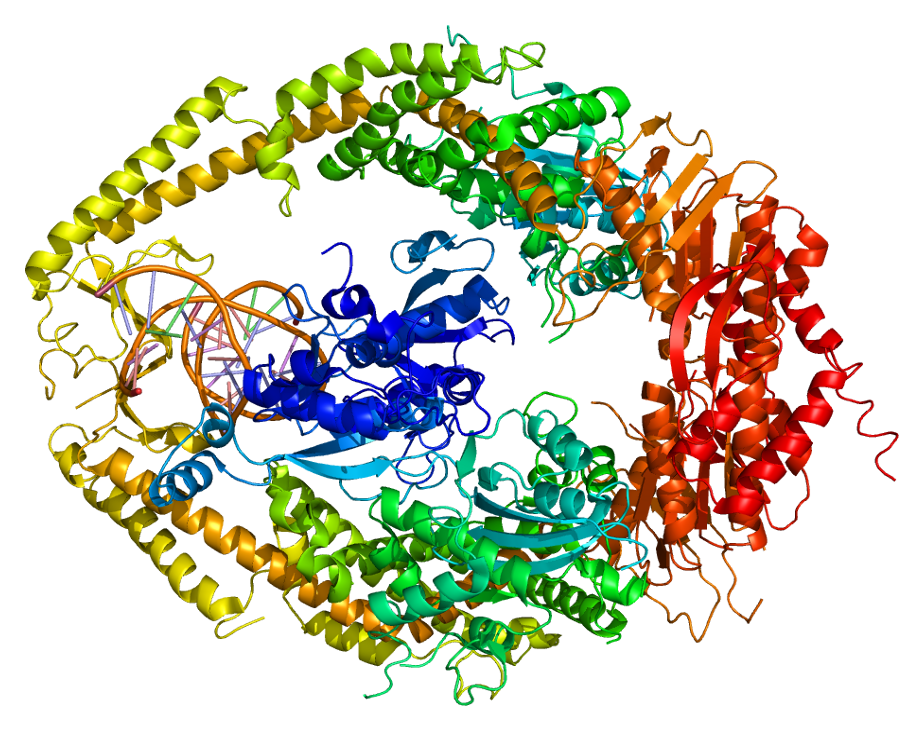In a few years, everyone will routinely be able to have their genes tested to determine how they differ from the norm. Nevertheless, scientists do not yet always have the ability to determine whether a mutation in a gene is irrelevant or whether it potentially may cause disease. Danish researchers have developed a method intended to predict how gene mutations affect the associated proteins. They can now predict whether mutations in a specific gene are likely to lead to colon cancer.
The human genome has 3 billion base pairs. More than 99% of the base pairs, however, are the same for all people. The remaining small genetic differences give rise to diversity, such as male versus female, tall versus short and black versus white. Nevertheless, these genetic differences can also lead to disease. Danish researchers have developed a method to predict whether genetic mutations are irrelevant or may signal the onset of disease.
“Previous methods mostly analysed only the DNA sequences and how they differ to identify areas that are potentially important, but we have now gone one step further. Our new method enables us to predict from the change in the gene whether the proteins produced by the cells fold correctly,” explains an author of the study, Kresten Lindorff-Larsen from the Linderstrøm-Lang Centre for Protein Science at the University of Copenhagen.
The researchers used their new method to predict whether people would develop Lynch syndrome, an inherited colorectal disorder that increases the risk of many types of potentially fatal cancer, especially colon cancer. The risk of developing cancer can be minimized if Lynch syndrome is diagnosed sufficiently early and the person is closely monitored.
Removing the uncertainty surrounding cancer
Lynch syndrome is caused by mutations in the genes that encode proteins that help to repair damaged DNA. One such repair protein is called MSH2, and it was previously not always possible to predict whether individual mutations to the MSH2 gene were relevant and could potentially cause disease. If a genetic test found mutations in a person’s MSH2 gene, they therefore often had to cope with great uncertainty and regular follow-up to monitor whether disease was developing or whether the mutations are simply part of the natural variation between people.
“Each individual genome differs slightly. Now we can predict whether these individual changes in the gene for the MSH2 protein will influence whether the MSH2 protein functions optimally in the cells or whether it is defective and therefore enables disease.”
The reason why the MSH2 protein is so important is precisely because it helps to repair other genetic mutations that arise throughout our lives. So if the protein is defective, the mutations are not adequately repaired, which therefore greatly increases the risk of developing cancer.
“If mutations occur in the wrong part of the protein, they may misfold three-dimensionally. The cell can sense this and therefore degrades the protein. This process results in the cell losing an important control function that normally protects it from cancer.”

A universal technique
The new method is based on an advanced computational model that describes the molecular bonds between the individual atoms that hold the three-dimensional structure of the protein together, and the model can therefore predict whether changing individual atoms can alter the entire protein-folding process.
“Molecules always gravitate towards the lowest energy level. We can now calculate which energy level a protein with thousands of atoms will end up with. Sometimes a single atom can alter the folding of an entire MSH2 protein. Sometimes several large changes are irrelevant. Nevertheless, our method means that we no longer have to guess. Instead, we can base our predictions on the many systematic investigations of the forces that keep the proteins stable and thereby functional.”
The researchers’ data set contains predictions for all 16,245 possible variants of the MSH2 protein in which a single amino acid has been replaced by another. In addition to the very systematic mapping and extensive knowledge of the biophysics of proteins, what makes this method potentially revolutionary is that the researchers linked the computational model with specific studies of how the various proteins behave in cells.
“In contrast to other approaches, we started with individual genes to best understand the fundamental cellular mechanisms and thereby be able to predict more accurately how the mutations lead to disease. This means that we now have both better understanding and a computational model we can use in connection with many other genetic diseases and thereby help individual people to be more certain as to whether they are genetically predisposed for a specific disease,” concludes Kresten Lindorff-Larsen.
“Predicting the impact of Lynch syndrome-causing missense mutations from structural calculations” has been published in PLOS Genetics. The Novo Nordisk Foundation awarded grants to authors Kresten Lindorff-Larsen og Rasmus Hartmann-Petersen for the projects Studies of Functional Protein Dynamics, Protein Optimization and Structural Stability and Protein Degradation in an Inherited Metabolic Disease.
